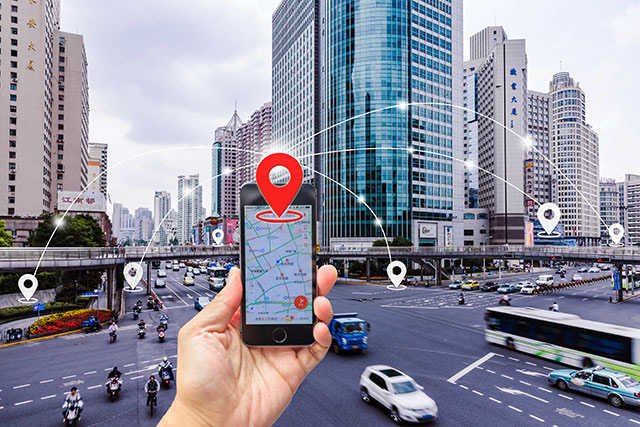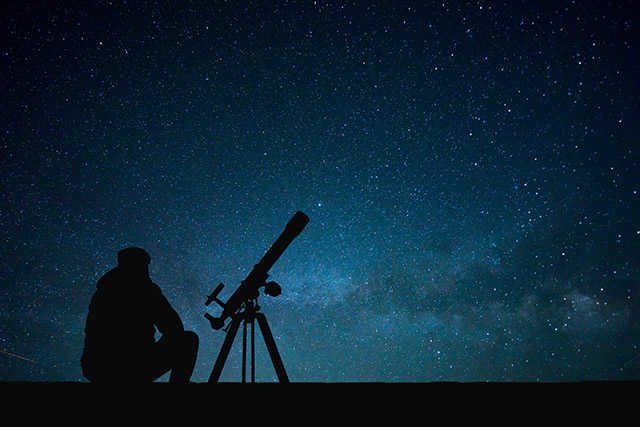[GPS Technology] The main key technology of GPS chip is the three generations of GPS chips 9 major knowledge
With the development of science and technology, the development of GPS navigation is increasingly worth looking forward to, and the development of the core technology of GPS chip is the most worthy of our concern.In the process of the development of GPS chips, "miniaturization" has always been an important development direction, which has led the GPS chipset to reduce power consumption and reduce volume.The system can provide detailed and accurate positioning information and traffic information, which can easily achieve the CPS satellite navigation function.
In recent years, due to the increase in chip manufacturers and providing integrity solutions, module manufacturers are more likely to develop integrated products. Therefore, a large number of manufacturers have invested in the production of receiver products.The effect of helping the GPS boom has also caused the price of GPS chips with the highest cost of GPS machine costs, and the GPS chip used to provide consumer electronics products has also begun to show their figures. In addition, chip manufacturers have gradually improved their performance performanceTherefore, the chip positioning ability has gradually closer.Under this trend, how GPS chip products win the affirmation of buyers, and have become the key factor in competing with each GPS chip in the market.
Speaking of the main key technologies of GPS chips, this includes responsible signal processing -base frequency (Baseband) and receiving signal -RF (RF).Since the GPS signal frequency (1575.42MHz) comes from a high altitude of 20,000 kilometers from the ground, the signal is very unstable, so the antenna receiving signal has been enlarged, filtered noise, frequency reduction, and sampling (RFFRORONT END) after the antenna receiving signal, and then passes throughAfter RF, the signal enters the base frequency processing section, and the digital signal sampled in the previous paragraph is calculated and output to facilitate the use of user interfaces. Among them, the GPS Baseband DSP chip is the core component, which is responsible for processing the address signal.
Based on the above, the two parts of RF and the base frequency include micro -processor Microprocessar, low noise amplifier (LNA), digital ections, RF Section, antenna Ele -Ment.), Output into several important components of the drive (GPI andDrivers) and the PRO -CESSOR PERIPHERALS.The integration of various GPS chip solutions on the market makes the GPS chip market is facing great variables.The first is "miniaturization". Looking back at the development history of GPS chips in recent years, with the combination of GPS and other products, and emphasizing that the volume of the terminal product is light and short, the GPS chip direction of the system single chipization of the system is an inevitable trend.At present, manufacturers can divide radio frequency or base frequency single chips for GPS single -chipization, and integrate more functionality.In the RF chip part, many manufacturers have integrated amplifier, filter, frequency reduction, frequency synthesizer and oscillator;Flash), power management time clock, etc.
Therefore, we see that the size of the GPS chip has gradually narrowed, and the GPS chip has developed from a dual module to a single module. In the future, GPS equipment products will become more and more vigorous, and chip demand will become greater.In addition, GPS chips will also face customer -based demand. In the past, most GPS chips were in the automotive market.At present, GPS chip applications have begun to be used in mobile phones and PDAs, or special personal carrying devices, such as the tracker for the elderly and children.The GPS chip may also be integrated with other functions, such as Bluetooth, USB, etc.Therefore, more and more customized modules designed for special applications will also be increasing.At present, most of the global investment in GPS chip development is mostly with foreign manufacturers, such as Sirf, Ti, XEMICS, FreeScalc, STM and other large manufacturers have launched GPS chips. Among them, Sirf is the world's largest GPS chip manufacturer. The product line is quite complete and can provide a full range of series.Solution product.
GPSKnowledge descriptionGPS"Three -generation chip" knowledge
Recently, in GPS products, the so -called "three -generation chips" are often mentioned.However, neither merchants and users have clearly explained and understand, and even misleading and misunderstanding.Exchange your own experience and views with you.
1. GPS chip: There are currently three main chips on the international (common/more popular) GPS module (common/more popular) GPS module (common/more popular) GPS module (OEM board).
(1) American SIRF (SIRF)
(2) Sony (Sony Ericsson/Sony Ericsson) chip
(3) Swiss Nenem NEMERIX chip
2. The core of the third -generation chip:
The chip hardware is similar, but internal software plays a main role.The so -called core technology of the three generations is only to improve the software algorithm on the basis of the 2nd generation. It is like the formula for calculating the acceleration/speed in the primary and high school physics classes, but in the university's higher mathematics, the number of guides and points in the university to calculate the same acceleration/The physical problems (algorithms) of speed are different. The time used is very different. It reflects the difference between middle school and university, just like the 2nd and 3rd generations.The second is that the hardware also provides quality standards.
3. The main function of the three -generation chip software:
3 generations of chip software improvement upgrade: (1) Algorithm improvement improves the stars/positioning speed time.(2) Improve anti -interference performance, signal -to -noise ratio, and receive effective star numbers through software filters.(3) Some chip implementation software DR trace (rotation) calculation, improving anti -high -rise buildings, shade, underpass cover and tunnel function.(4) soft channel search, search to increase the number of channels for visual satellites (12-24), and can continue to position when personnel, vehicles, uphill, and posture changes, airplanes, and Ship star calendars changes.
4. Three -generation chip hardware improvement:
(1) The power consumption of the chip is reduced and the volume is reduced (compared with the 2nd generation).
(2) Improve anti -interference capacity, full shielding or dual chip separation.
5. GPS module and product:
gpsgpsEven wires, connectors, etc. look irrelevant components).
6, antenna is an important factor:
GPS antennas must be used in common GPS products such as handheld, PDA, Bluetooth, G-MOUSE, etc., regardless of active, passive, or even omniscient antenna, more than a dozen performance indicators, angle (except for 1600 maximum full antenna), DB of amplifiers, impedance range, material, anti-interference ability and module matching determine the performance of the entire product, and even 2-3 antennas (above and bottom) on the aircraft.position.In other words, the 3 -generation module is very good, and the antenna may not match the 2nd generation products.
7, number of channels:
Three stars are two-dimensional, 4 stars are three-dimensional positioning. This is the basic principle of GPS. We use 11-12 pieces on the ground (because the antenna is 160 degrees angle).) You can collect a few more (must be omnidirectional or more or more antennas), but it also takes 3-4 of the 3-4 signal and the nearest effective satellite for calculation positioning.Four channel positioning, a channel quickly search for all visual satellites, and compared with 4 of the effective stars, it is replaced by one of them, so that 4 strongest signal satellites are maintained.Therefore, the higher the passage, the better, the generally 12 are enough. What 16, 18, 20, 24 ... are soft channels, which reflect the number of visible satellites that can be searched for viewing satellites. It has no practical significance.
8. Induction (DB number):
The degree of induction of GPS receiving signal (-150-195DB) The standards of each manufacturer are not uniform, some are modules, some are modules contain antenna, some are the average, some are peaks (maximum value).Everyone's actual environment (electric field, magnetic field, high-voltage, microwave, geomagnetic ...) is very different. Therefore, the difference between this indicator is 3-5DB, which is not related to the order of order, but it is probably a approximate reference.
9. The obvious advantages of third -generation products (actual effects):
As long as the user needs to understand the specific technical indicators of the three -generation chip, it is more important to observe whether there is the following characteristics.
(1) Fast positioning time: Regardless of the cold start, Wen Qi, and the heat, the re-capture time is almost 5-30 seconds (compared to the second generation). In fact, most users are not worse than these ten seconds.
(2) High sensitivity: that is, in high -rise buildings, shade, underpass, cover files, Suidong, windows, cars, and even under the chassis of the car, you can quickly position more than 4 satellites.It is often said that it can be positioned a bit (single -star positioning), that is, "Give some Sunshine".
(3) Anti -interference performance: high -voltage lines, electric fields, magnetic fields, high -speed dynamics, microwaves, mobile phones, can still work properly in the environment of frequency interference.
(4) Low power consumption and power saving: reduce power consumption, and even have sleep state (static does not work), which can save power and improve product standby time.
(5) Small volume, good performance and price comparison: small volume and light weight. This is the needs and development trend of society, which can expand more application scope and field.In fact, the price of the three-generation chip should be the same as the second generation, or even lower, but the function is much improved. T-38 (16 channels, 3rd generations) 200-300 yuan/block.


